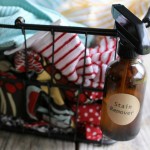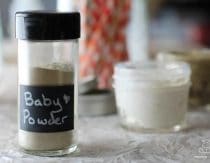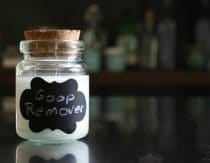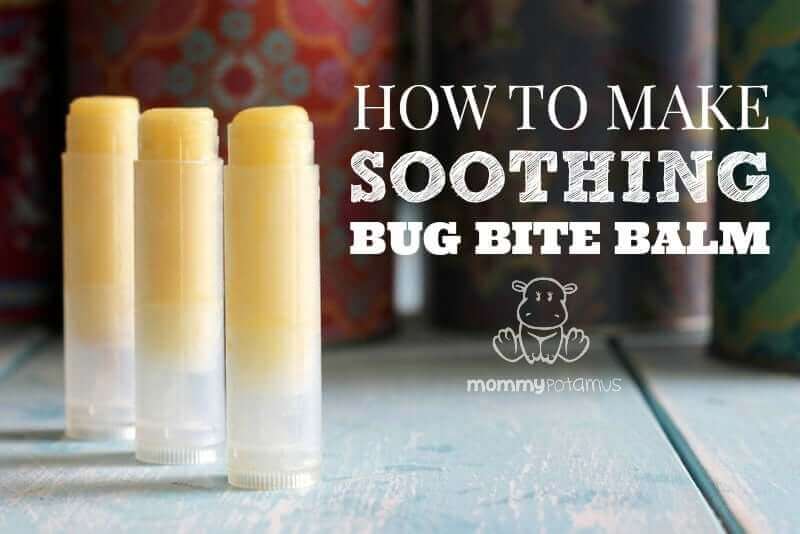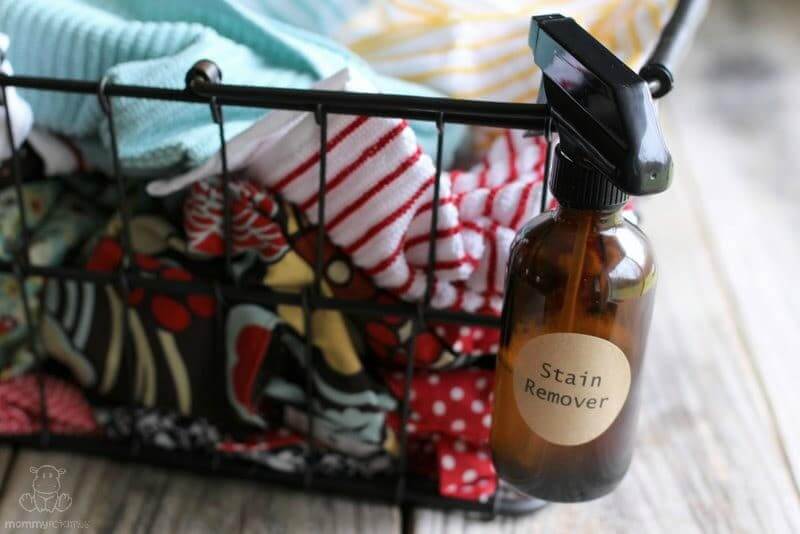
I’ve been using the same tried-and-true homemade powdered laundry detergent and DIY stain remover for years, but as my kids have grown, so have the size of their grass, oil and ketchup stains.
My old stain remover recipe just wasn’t up to the task – especially when it came to oil stains – so I awhile ago I tested a few variations with ingredients like hydrogen peroxide, castile soap, glycerin, cornstarch/arrowroot flour, and lemon essential oil.
Using the leftovers from my potholder project, I rubbed all kinds of things on several t-shirt strips. After letting the stain set, I sprayed them with several different recipes and then rinsed the cloth in the sink.
Formula #3 was by far the best – especially in dealing with oil stains – so that’s what I’m sharing with you today. It’s worked beautifully for me in removing food stains, oil stains, grass stains, blood stains and a few mystery stains.
Below is a before/after photo of one of my son’s favorite shirts. The stains are many months old so I wasn’t expecting much when I started using the new recipe, but just spraying the shirt and letting it sit overnight before washing has made a huge difference. (I’ve sprayed it three times so far.)
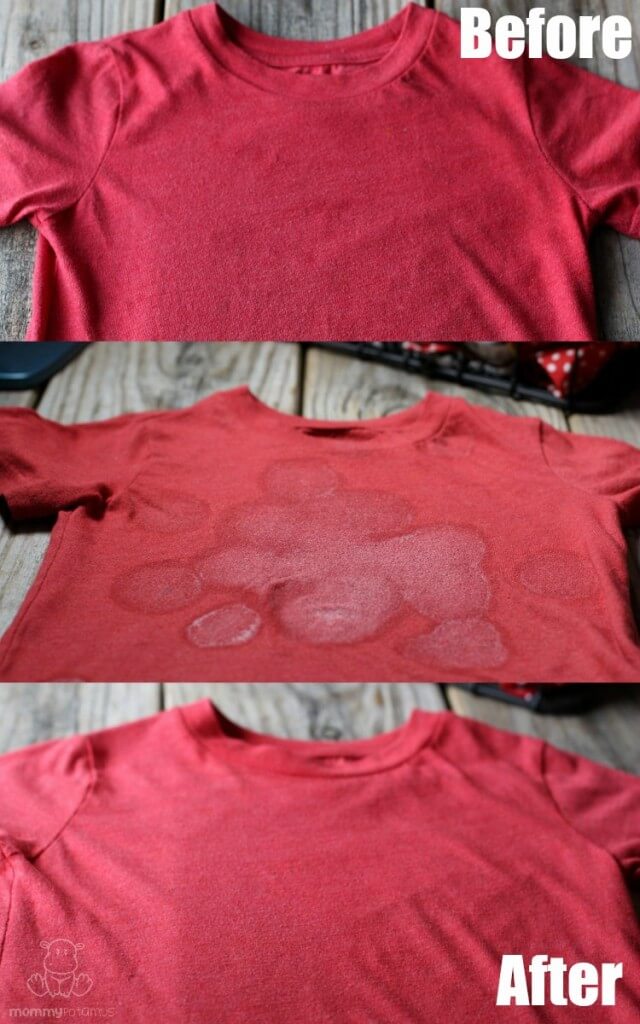
There are still a few very light spots that I’ll continue to spray before washing, but this shirt has moved from the “only at home” category to “wear in public.” (I’m not the only one who has those categories, right?)
The science behind homemade stain removers
So why does it work? Hydrogen is a weak acid, and castile soap is a base. Normally when you mix the two together they cancel each other out, so I was shocked that this was the winner.
I wouldn’t have even tried putting the two together, but I’d seen so many sites recommend Dawn dish soap mixed with hydrogen peroxide that I had to see what all the fuss was about. (This recipe is based on that formula, only with natural castile soap instead of Dawn and the addition of lemon essential oil for extra degreasing oomph.)
It’s possible that the soap dampens the effect of the hydrogen peroxide just enough to make it a color-safe form of oxygen bleach. Most “color-safe” bleaches contain stable ingredients that turn into hydrogen peroxide when added to water. Still, it’s important to do a patch test before applying just in case – some fabrics will fade even with color-safe products.
Another possibility is that the soap works as a degreaser while the hydrogen peroxide lifts the stain and breaks down organic components. I’m not sure. All I know is it works way better than my old recipe!
Oil Stain Tip
Sometimes, when I have an oil stain that is particularly stubborn, I’ll spray this stain remover on it and then sprinkle it with diatomaceous earth, baking soda, arrowroot powder or cornstarch. The powder will help absorb the oil from the stain.
Don’t Want To Make Your Own?
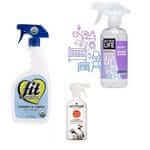
After testing a few brands including Fit Organic, Attitude, and Better Life, I found that Better Life was my top choice for ingredients and performance when I don’t have time to make my own.
Attitude was a close second, but it’s designed to treat the stain when it’s fresh, not later when you find it in your kids hamper.
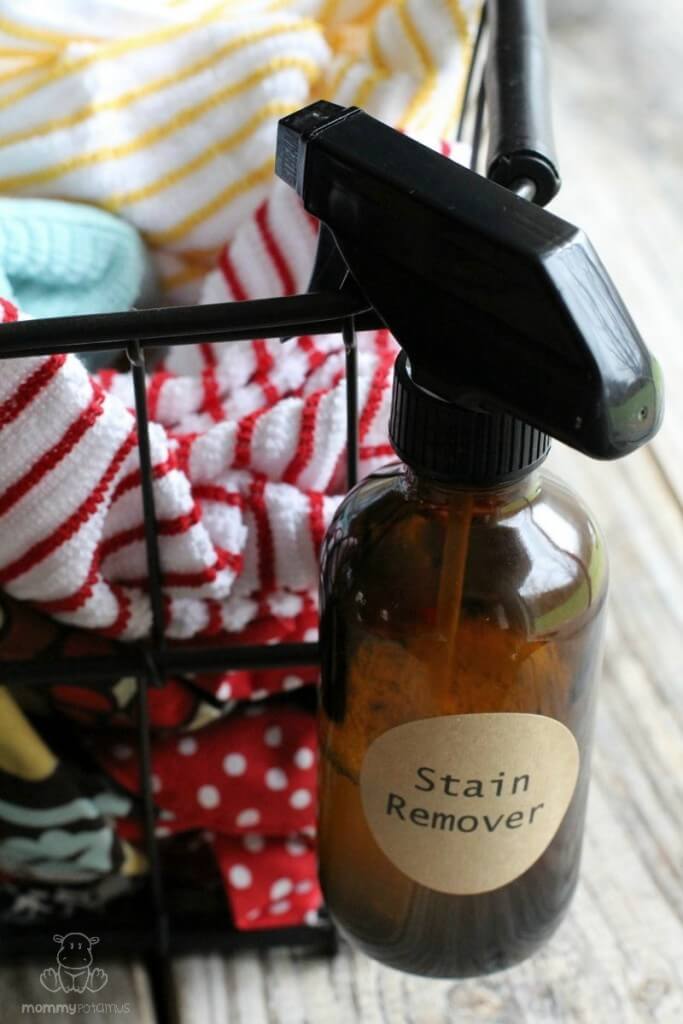
DIY Stain Remover Recipe
Ingredients
- ¼ cup hydrogen peroxide (3%)
- 2 tbsp castile soap
- 20 drops lemon essential oil
Instructions
To Make DIY Stain Remover
- Combine ingredients and pour into a dark glass spray bottle and shake well to combine. Hydrogen peroxide is sensitive to light so a dark bottle is essential for maintaining potency.
- Store in a cool area out of direct sunlight.
To Use DIY Stain Remover
- If there is any concern about colorfastness, do a patch test on a small area before spraying the stain. When you're ready to treat the stain, shake the bottle well and spray it directly on the stain.
- Sometimes I let it sit and then just throw it in the wash. If the stain is particularly pronounced I spray the area and let it to sit for about 5 minutes, then rinse while rubbing/scrubbing the fabric with a stiff toothbrush. (Not the soft brush I use on my teeth!)Then I reapply a second time and let it sit until I do laundry.
Frequently Asked Questions
Why do you make such a small batch?
Personally, I’ve found that it tends to lose some of it’s stain removal powers, so I make it in small batches so that it’s always fresh. It keep all the ingredients (and some old measuring supplies) in my laundry room so it takes just a couple of minutes each time.
Does this work on grease stains?
I’ve found it works well on oil stains, but depending on their source black grease stains may be another story. I don’t have any experience personally so if you try it please leave a comment and let me know how it worked!
More Cleaning Tips & Recipes
Bleach Alternative – If finding a homemade bleach alternative that WORKS feels a little like hunting for a mythical laundry unicorn, I think you’ll like this simple but effective recipe. All you need are three ingredients!
How To Clean Your Washing Machine – I used to think that washing machines were self-cleaning: Just toss in your dirty clothes, a scoop or two of laundry detergent, and the machine cleans the clothes AND itself, right?
Unfortunately, no. Washing machines can develop buildup from soap scum and hard-water deposits, and they’re vulnerable to mold and mildew, too. In the article above, I explain how to clean your washing machine so that your laundry comes out cleaner than when you put it in.
Want a FREE ebook of non-toxic cleaning recipes that WORK?
I’ve created a free ebook for you as a gift for signing up for my newsletter. 7 Non-Toxic Cleaning Recipes That Really Work covers seven recipes that you can make in just a few minutes each for squeaky clean windows, sparkling dinnerware, lemon-fresh countertops, and more. Subscribe to my newsletter below and you’ll be redirected to a download page for immediate access to this PDF ebook.

